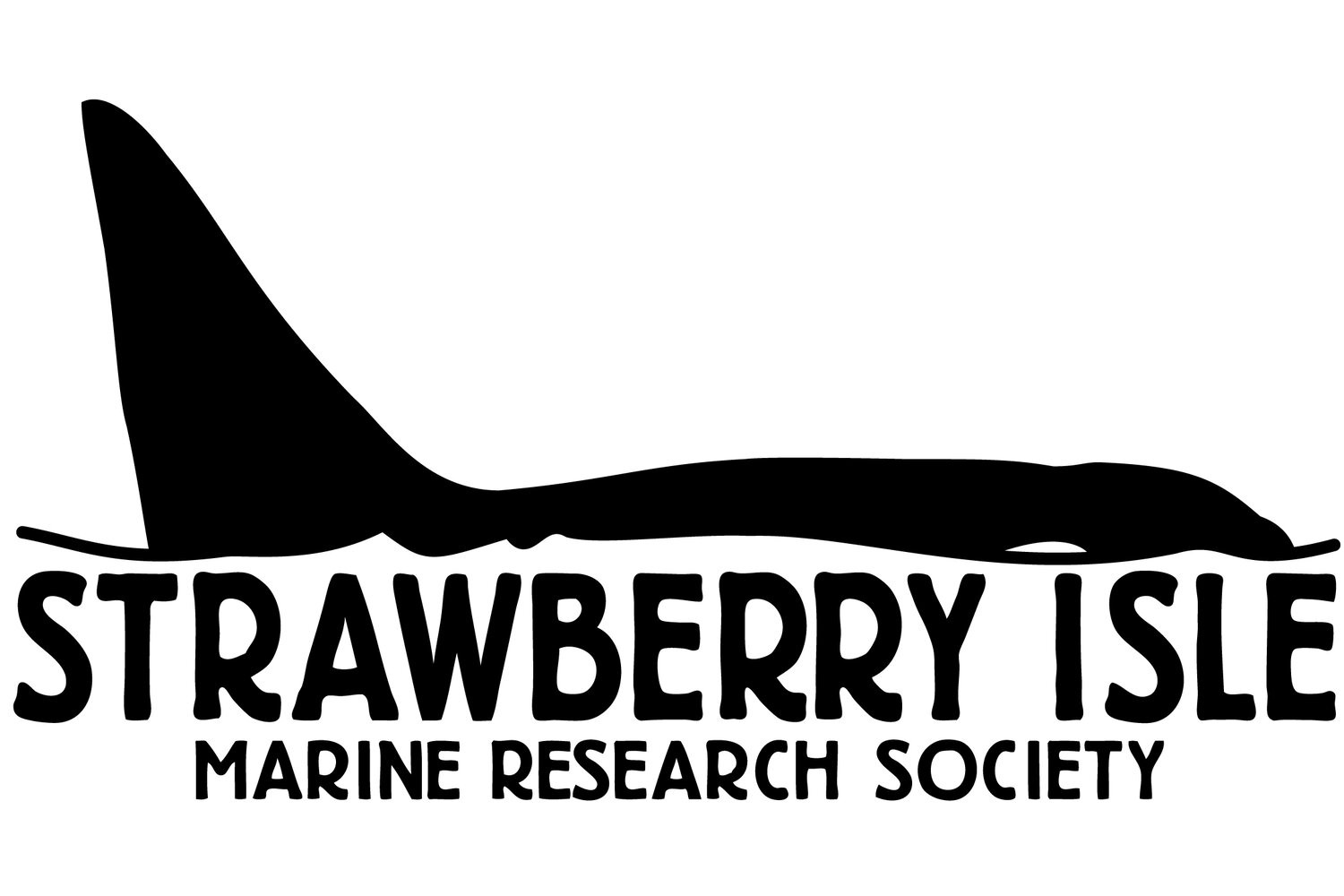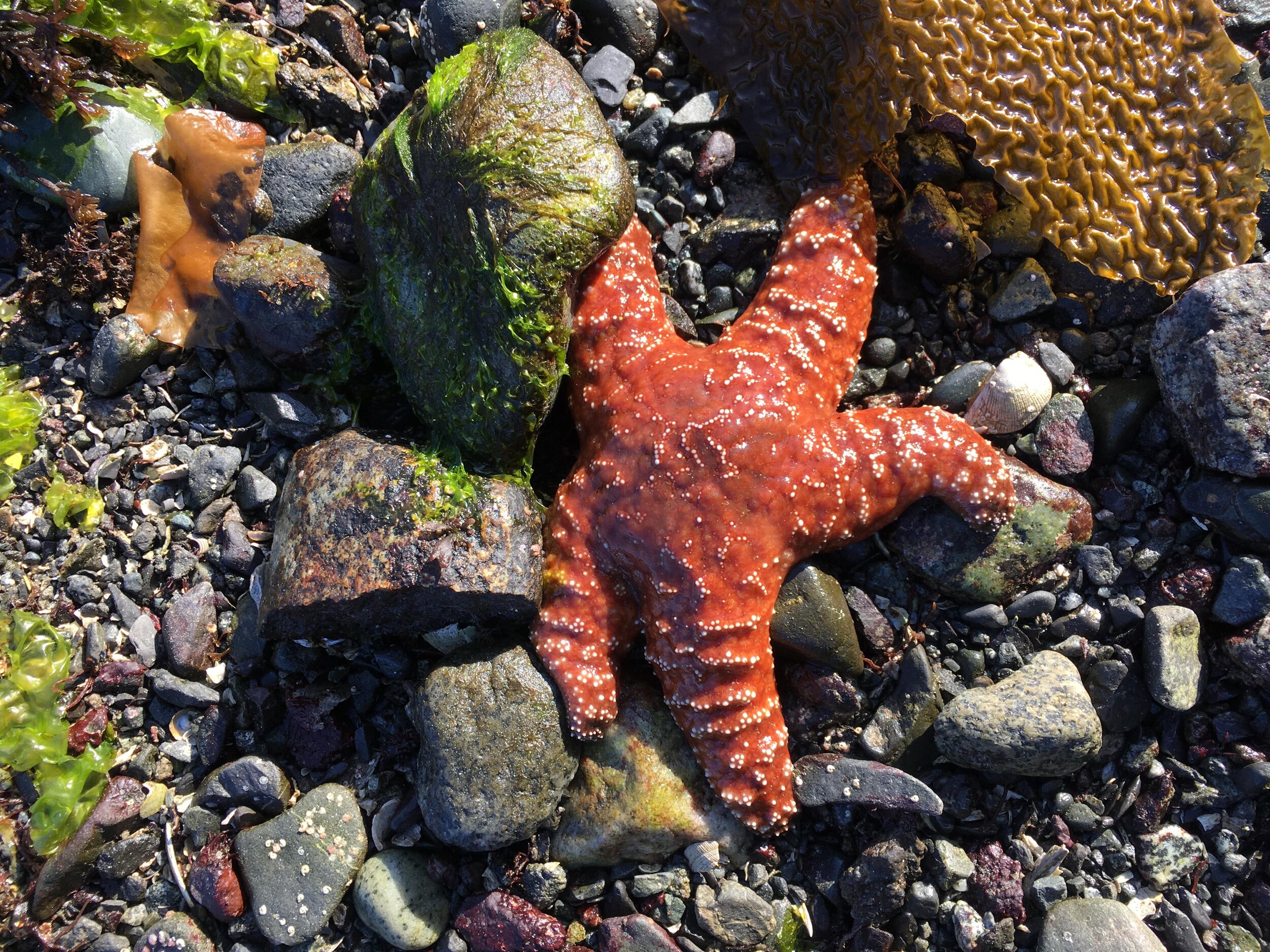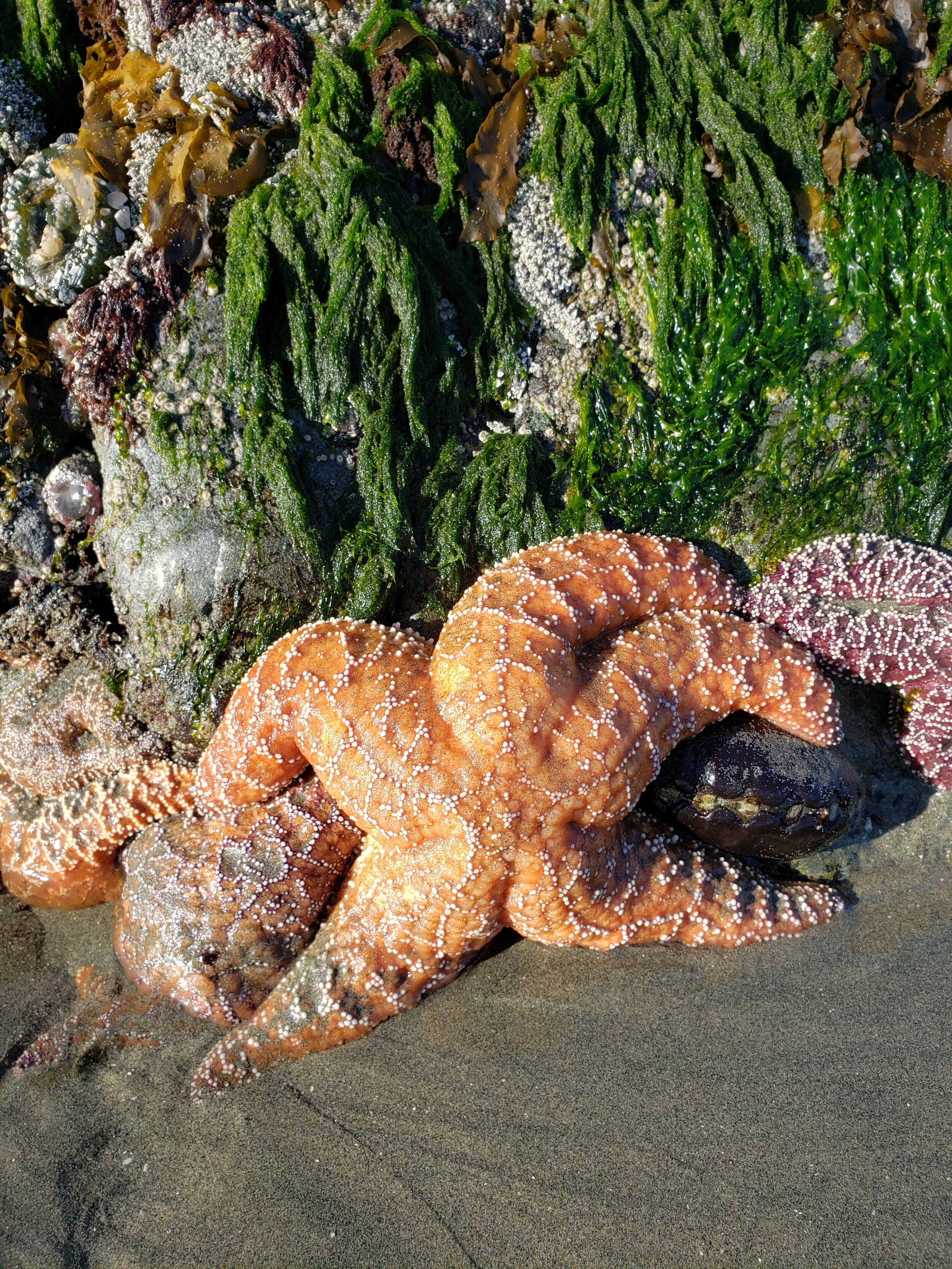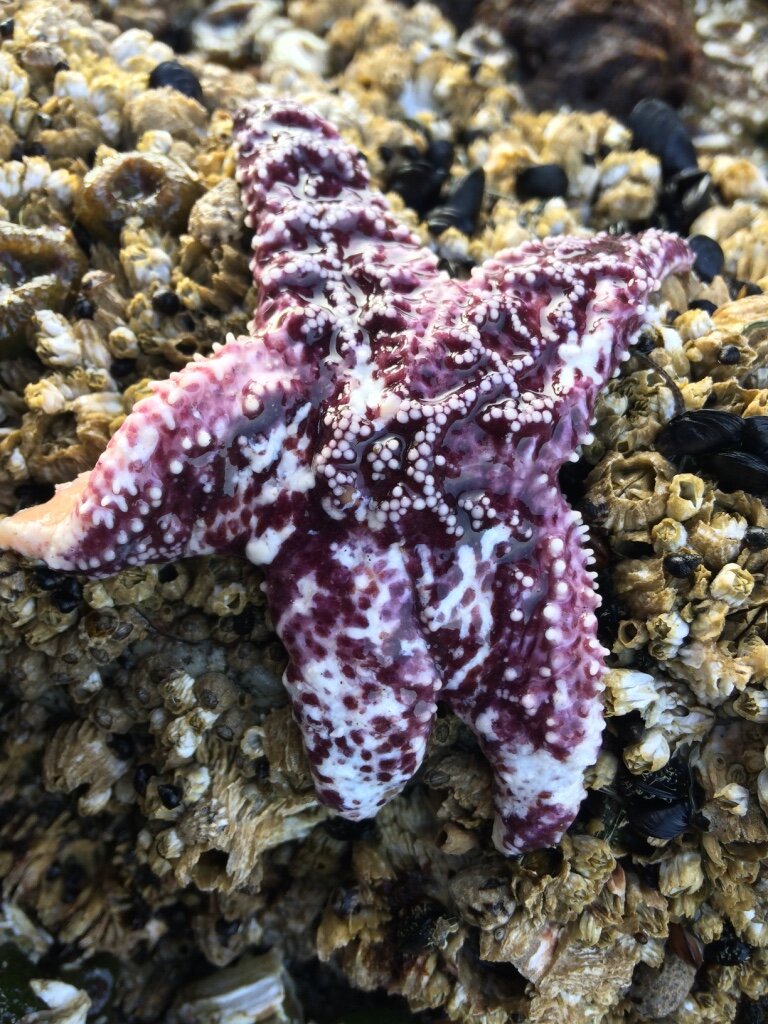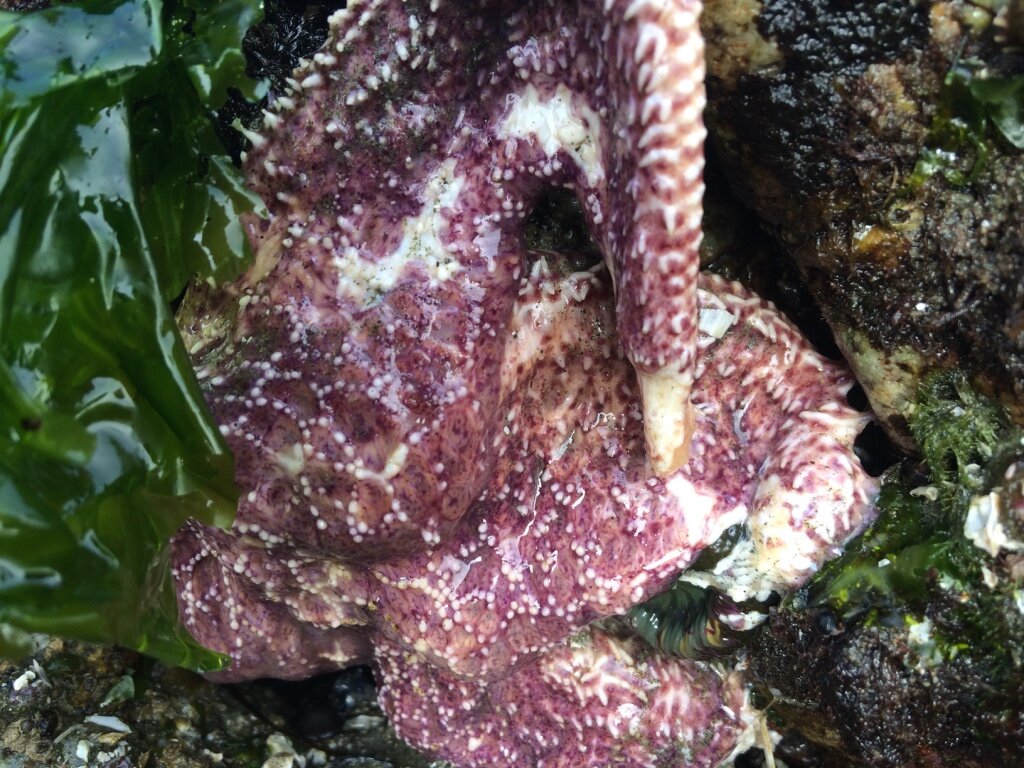Early Morning Sea Stars
/Ashley Hoyland, Stockhom Island Kayak Survey
I take another slurp of my coffee and pull my toque further down over my ears while waiting for my survey partners to arrive. Surveying intertidal creatures means being out and about at low tide, sometimes that means pretty early in the morning. It also means being out and about in any weather – often in Tofino that means rain, even though most of our surveys take place through the spring and summer months.
After my survey partners arrive we check our gear and head down to the survey site where we’ll spend the next hour or so looking for sea stars.
Why are we meeting at the crack of dawn in cold, early spring rain to hunt for sea stars?
SIMRS is part of a network of organizations all along the pacific coast of North America currently collecting data on sea stars. Back in 2013/14 sea stars mysteriously began to die in large numbers all along the pacific coast. The disease was pretty gruesome causing large lesions across the sea stars’ bodies, giving the appearance that they might be melting. Spreading steadily up the pacific coast, the disease – now known as Sea Star Wasting Syndrome – arrived in BC in 2015. Since then, SIMRS has been doing monthly check-ins with our local populations of sea stars to see how they’re doing.
Spreading out along the survey site, picking my way between slippery rocks and flipping over trailing algae to hunt for hidden stars, I marvel at the abundance of other life out here in the intertidal; mussels, anemones, seaweeds, nudibranchs and snails galore. Sculpins darting across the tidepools and hermit crabs scurrying to hide under loose rocks. Nosey gulls wheeling overhead checking to see if we’ve found anything worthy of their attention. Each time I find a star I stop to take measurements and call back to the data recorder.
Sea Star Wasting Syndrome has had a huge impact on our sea star populations. Around 20 different species have been impacted, some more seriously than others; it’s thought as many as 96% of the giant, many-armed sunflower stars (Pycnopodia helianthoides) may have died. These die-offs can have huge consequences for the wider ecosystem where sea stars are both important predators and prey. The orange and purple Ochre stars found commonly in our area (Pisaster ochraceus) can regularly be found caught in the act of munching away on mussels. Keeping the mussel population under control by eating them helps to promote biodiversity in our tidepools by giving room to for other species to thrive. Without them, these gloriously rich and biodiverse tidepools can easily turn into walls and banks of densely packed mussels – and nothing else.
We keep track of how many of each species of sea star we find as well as measuring their size and whether or not they appear healthy. These basic measurements help us to work out how our local population might be changing over time – Are there more or less stars? How old are they? Is it the same story for all species or do we see different trends?
Since 2015, some populations do appear to be recovering, though the disease persists at varying levels. Despite studies and investigations into the wasting, the cause of the disease largely remains a mystery. We hope that keeping an eye on our stars and local conditions can give us some clues as to what might be going on.
It’s also fascinating to be able to watch the seasons changing in the same tidepools, just as apparent and dependable as the seasonal change in the trees and fields. Right now, they’re full of egg masses and new algal life!
After a few quick photos to document any unusual species or disease we encounter, we retreat. The tide is already coming back to cover the rocks where we began our count. It’s time for a well-earned break in the warm and dry with a fresh cup of coffee. Silently I bid goodbye to the stars and tidepools – “Sea you next month!”
- Ashley Hoyland
(May 12, 2020)
. . .
